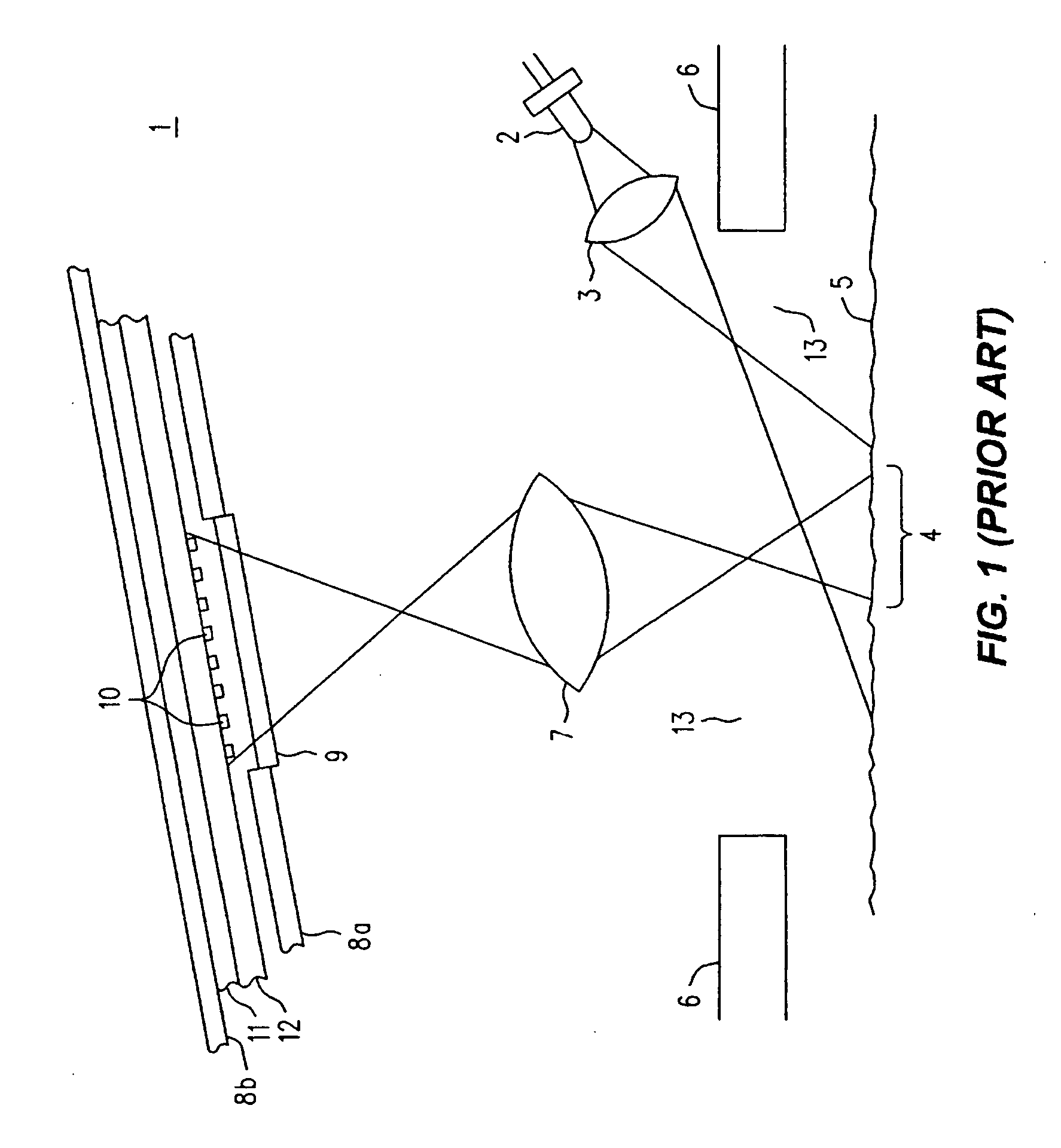Reducing dust contamination in optical mice
- Summary
- Abstract
- Description
- Claims
- Application Information
AI Technical Summary
Benefits of technology
Problems solved by technology
Method used
Image
Examples
Embodiment Construction
[0008]FIG. 1 shows a cut-away side-view of an optical mouse 1 known to the art. Light source 2 emits light which is projected by lens 3 (which may be separate as shown, or may be integrated into the package of source 2), through orifice 13 in bottom surface 6 and onto a region 4 that is part of a work surface 5. Although omitted for clarity, orifice 13 might include a window transparent to the light from source 2, and which serves to keep dust, dirt, or other contamination out of the innards of mouse 1. Light from the illuminated region 4 illuminated photodetector array 10 through window 9 and lens 7. Integrated circuit package portion 8a may dispense with separate window 9 and lens 7 by combining them into one and the same element. Photodetector array 10 is fabricated onto a portion of an integrated circuit die 12 affixed by adhesive 11 or other means to package portion 8b. Photodetector array 10 sends image data to a processor, not shown for purposes of clarity.
[0009] The process...
PUM
 Login to View More
Login to View More Abstract
Description
Claims
Application Information
 Login to View More
Login to View More - R&D
- Intellectual Property
- Life Sciences
- Materials
- Tech Scout
- Unparalleled Data Quality
- Higher Quality Content
- 60% Fewer Hallucinations
Browse by: Latest US Patents, China's latest patents, Technical Efficacy Thesaurus, Application Domain, Technology Topic, Popular Technical Reports.
© 2025 PatSnap. All rights reserved.Legal|Privacy policy|Modern Slavery Act Transparency Statement|Sitemap|About US| Contact US: help@patsnap.com


